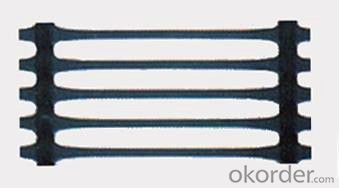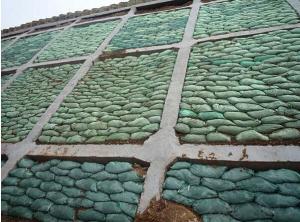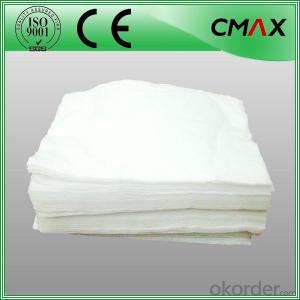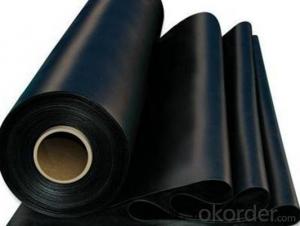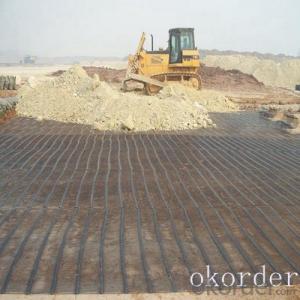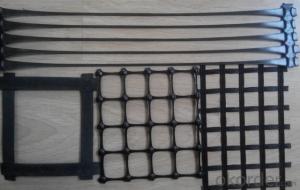Drainage Geotextile Membrane Small Deformation Polyester Geogrid for Driveway
- Loading Port:
- Qingdao
- Payment Terms:
- TT OR LC
- Min Order Qty:
- 100000 m²
- Supply Capability:
- 300000 m²/month
OKorder Service Pledge
OKorder Financial Service
You Might Also Like
Description Of Deformation Polyester Geogrid:
Polyester geogrid is a new kind of favorable earthwork base material to strength the road surface and roadbed, which composed of high strength polyester yarns coated with an inorganic sizing agent.
Main Features of Asphalt Reinforcement Fiberglass Geogrid:
1,The produce possesses high intensity/low elongation/thermostable/high module/light weight/good toughness/anti-corrosive/long life etc.
2,and widely applies in the old cement road surface,runway's service,the dike,the river bank,the side slope protection,project domains and road bridge connection surface enhancement processing,
3,can strengthen and reinforcement the road surface,prevents the road surface wheel rut fatigue cracking, the hot cold expansion crack and the following reflection crack,and can be scattered the road surface bearing stress ,
4,extend road surface serivice life, the high tensile strength low elongation ratio, non long-term creep deformation,good physical chemistry stability,good thermostability,anti-weary dehiscence,
5,thermostable wheel rut, anti-low temperature shrinkage crack,postponement reduction reflection crack.
Specifications of Asphalt Reinforcement Fiberglass Geogrid:
| Specifications | Tensile strength(KN/m) | Tensile strength at 2% elongation | Tensile strength at 5% elongation | Nomianal elongation | Products in the range of coal mine | Max peel strength at welding point | ||
| GSJ30-30 | ≥30.0 | ≥10.0 | ≥20.0 | ≤12 | Fire out time from outer flam(s) | Surface resistivity | ≥30.0 | |
| GSJ40-40 | ≥40.0 | ≥20.0 | ≥25.0 | ≤3 | <1×109 | |||
| GSJ50-50 | ≥50.0 | ≥17.0 | ≥34.0 | |||||
| GSJ60-60 | ≥60.0 | ≥22.5 | ≥40.0 | |||||
| GSJ80-80 | ≥80.0 | ≥28.0 | ≥56.0 | ≤13 | ||||
| GSJ100-100 | ≥100.0 | ≥35.0 | ≥70.0 | |||||
| GSJ120-120 | ≥120.0 | ≥60.0 | ≥90.0 | |||||
| GSJ150-150 | ≥150.0 | ≥52 | ≥104.0 | |||||
Applications of Asphalt Reinforcement Fiberglass Geogrid:
1.It reinforces old asphalt concrete road surface and asphalt surface layer,and prevents damage.
2.It is used for rebuilding cement concrete road surface into composite road surfac and restraining reflection caused by block contraction.
3.It is used in road expansion and improvement project and prevents crack caused by old and new combination position and uneven sedimentation.
4.It is used in soft soil base reinforcement treatment,is favorable for soft soil water separation and concretion,restrains sedimentation effectively,distributes stress uniformly and improves overall strength of road base.
5.It is used for preventing contraction crack caused by new road semi-rigid base layer,and reinforces and prevents road surface crack caused by foundation crack reflection.
IMages of Asphalt Reinforcement Fiberglass Geogrid:
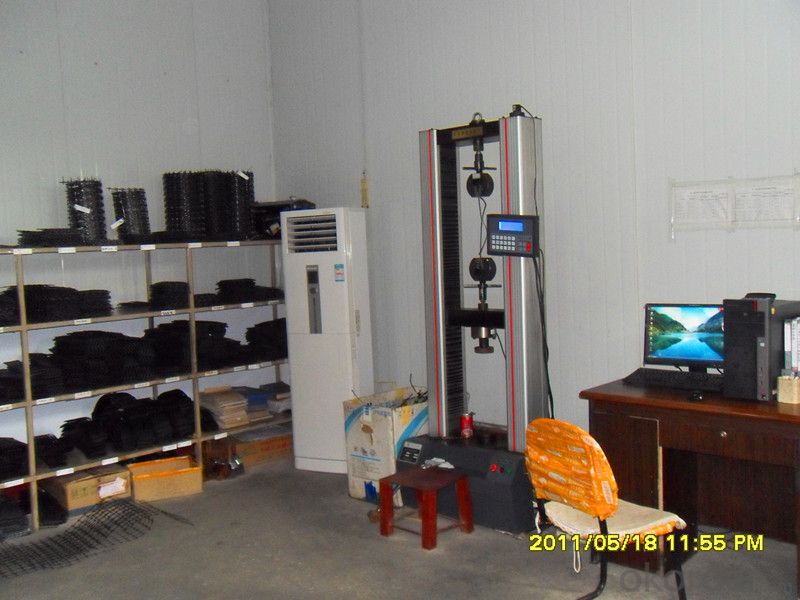
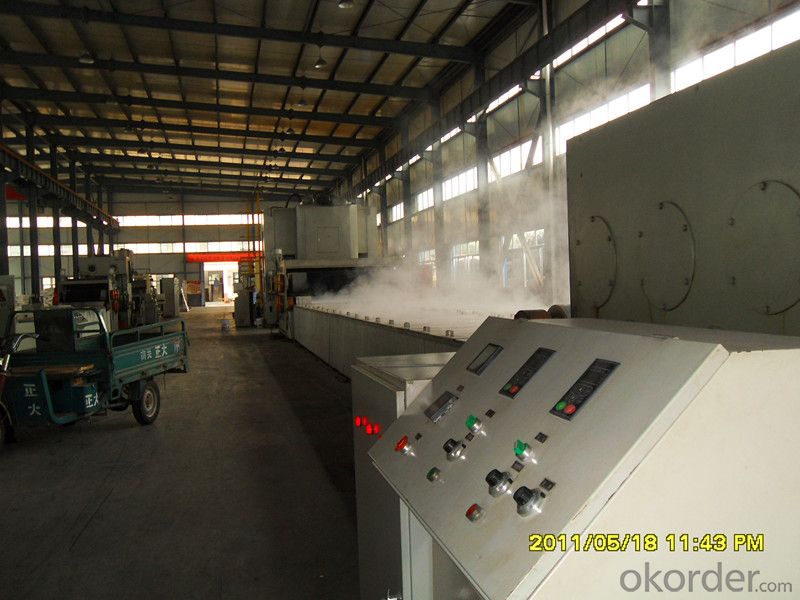
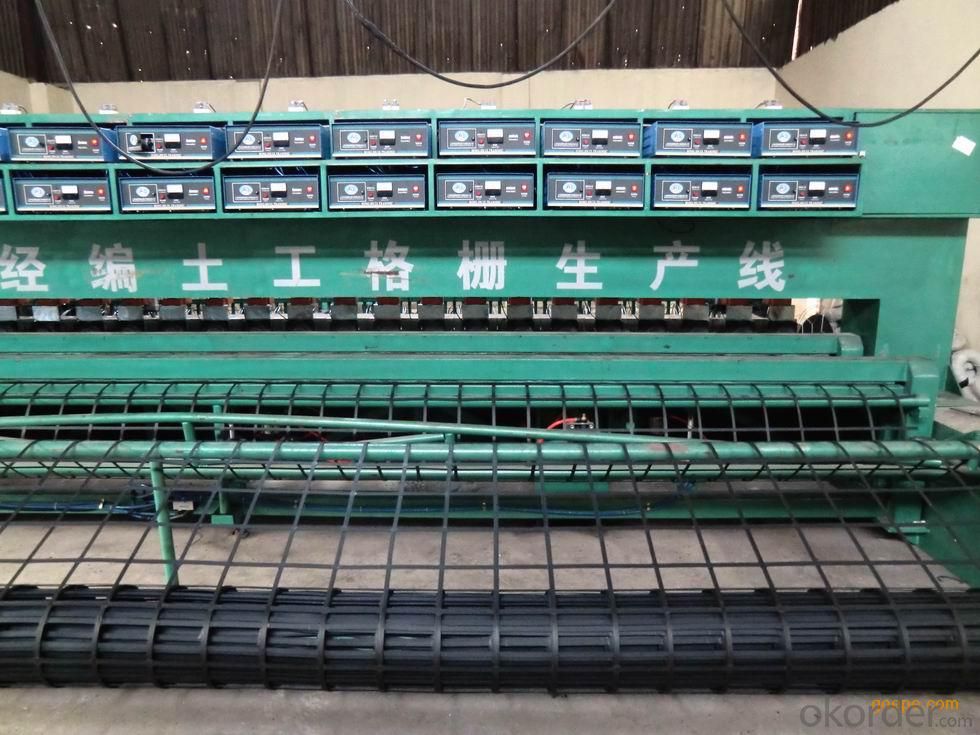
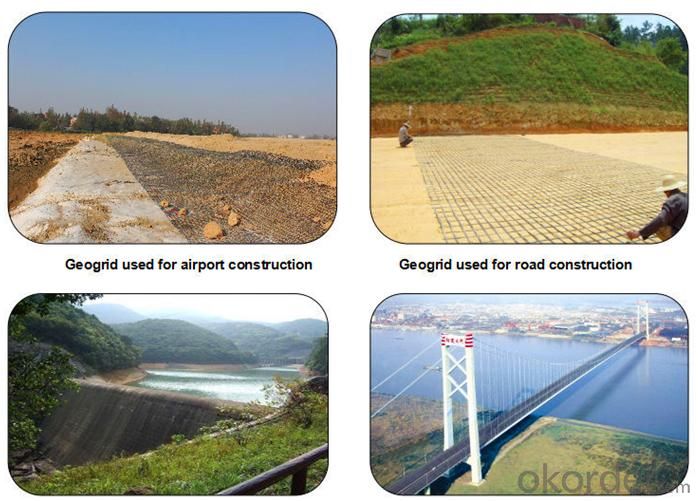
FAQ:
1. Do you supply free samples for customers?
Yes,we will supply free samples for you.Please send your address for us.
2. How Many years experience do you have?
We have been exported to more than 20 countries in the past 15 years.
3. How long do we usually reply your request?
We always reply our customer within 24 hours.
- Q: Geotextile Commission test how many square meters
- 1-2 square meters, I am specializing in the production of geotechnical materials
- Q: Can geotextiles be used in contaminated soil?
- Yes, geotextiles can be used in contaminated soil. Geotextiles are commonly employed as a barrier or separator in construction projects, including those involving contaminated soil. They can help prevent the migration of contaminants, aid in soil stabilization, and facilitate the filtration and drainage of water. However, the choice of geotextile material and design should be carefully considered to ensure its effectiveness in specific contaminated soil conditions.
- Q: How do geotextiles help in preventing soil erosion in construction sites?
- Geotextiles help prevent soil erosion in construction sites by acting as a barrier between the soil and any external forces, such as wind or water. They stabilize the soil, allowing for proper drainage while also preventing the loss of soil particles. Additionally, geotextiles provide reinforcement to the soil, reducing the potential for erosion and ensuring the stability of the construction site.
- Q: How to apply geotextile soil
- Directly laying Huazhi geotextile material manufacturers
- Q: What are the different installation guidelines for geotextiles in reinforcement projects?
- There are several guidelines to follow when installing geotextiles in reinforcement projects. Firstly, ensure that the subgrade is properly prepared and compacted before laying the geotextile. Next, carefully unroll the geotextile and secure it in place using stakes or by embedding it in the soil. It is important to overlap adjacent rolls of geotextile by at least one foot to ensure proper coverage. Additionally, avoid wrinkles or folds in the geotextile as they can reduce its effectiveness. Finally, cover the geotextile with a layer of soil or aggregate to protect it from damage and to provide additional reinforcement.
- Q: How do geotextiles contribute to soil improvement in soft ground areas?
- Geotextiles contribute to soil improvement in soft ground areas by providing reinforcement, stabilization, and separation functions. They act as a barrier between the soil layers, preventing mixing and promoting drainage. Geotextiles also distribute loads more evenly, reducing the risk of soil settlement and increasing the overall stability of the ground. Additionally, these materials can help control erosion by effectively retaining soil particles while allowing water to pass through, minimizing surface runoff and maintaining the integrity of the soil.
- Q: Can geotextiles be used for reinforcement in landfills?
- Yes, geotextiles can be used for reinforcement in landfills. They are often used as a separation layer between different soil layers, providing stability and preventing the mixing of materials. Geotextiles also help in enhancing the overall strength and performance of the landfill structure by distributing loads and reducing the potential for erosion or piping.
- Q: How to judge the geotextile test results are reliable
- Determine whether the tensile test results of the material are reliable, depending on whether the tensile process of the material to be tested during the test has reached the state required by this detection method. As a tensile test, to test the tensile strength and elongation of the material under specified conditions. Stretching process, the material to be tested to be uniform force, the test machine fixture holding the sample to be solid, the sample does not produce slip nor be caught damage. This is the test process of the requirements of the test machine fixture and the installation of the sample requirements, only to meet this requirement and other requirements, the test results may be accurate. Geotechnical composite materials - Geosynthetics - Staple acupuncture non - woven geotextiles GB / T-1998 Geosynthetics - Filament spunbonded acupuncture non - woven geotextiles GB / T - 1998 Geosynthetics Geosynthetics - Geosynthetics - Geosynthetics - Geosynthetics - Geosynthetics - Geosynthetics - Geosynthetic materials GB / T - 1998 Geosynthetics - Geological synthetic materials Polyvinyl chloride geomembrane GB / T-1999 Geosynthetics Plastic geogrid GB / T-1999 Geosynthetics Plastic flat wire braided geotextiles GB / T-2002 Geosynthetics Plastics 3D geogrids GB / T-2002 geosynthetics / outer composite geotextile
- Q: Health geotextile how much money ah?
- Health geotextile, also known as geotextile, it is made of synthetic fibers through the needle or woven from the permeability of geosynthetics. Finished cloth for the cloth, the general width of 4-6 meters, the length of 50-100 meters. The price according to the weight and standard to set, weight (80-1500g / ㎡), the quality standard is a requirement, divided into non-standard, whitening A, Sinochem, the general national standard, Paul national standard, Wait. Ton price is generally between 4900-7500 yuan / ton, but the weight <200g, an increase of 100 yuan / ton; weight> 800g, an increase of 500 yuan / ton. 187 & lt; 6600 & lt; 5604
- Q: How do geotextiles help in reducing the impact of heavy rainfall on soil?
- Geotextiles help in reducing the impact of heavy rainfall on soil by acting as a protective barrier. They allow water to pass through while preventing soil erosion and retaining soil particles in place. This prevents the loss of valuable topsoil, which helps to maintain soil fertility and structure. Additionally, geotextiles aid in promoting water infiltration and drainage, reducing the risk of waterlogging and surface runoff, which can cause floods or soil erosion.
Send your message to us
Drainage Geotextile Membrane Small Deformation Polyester Geogrid for Driveway
- Loading Port:
- Qingdao
- Payment Terms:
- TT OR LC
- Min Order Qty:
- 100000 m²
- Supply Capability:
- 300000 m²/month
OKorder Service Pledge
OKorder Financial Service
Similar products
Hot products
Hot Searches
Related keywords







